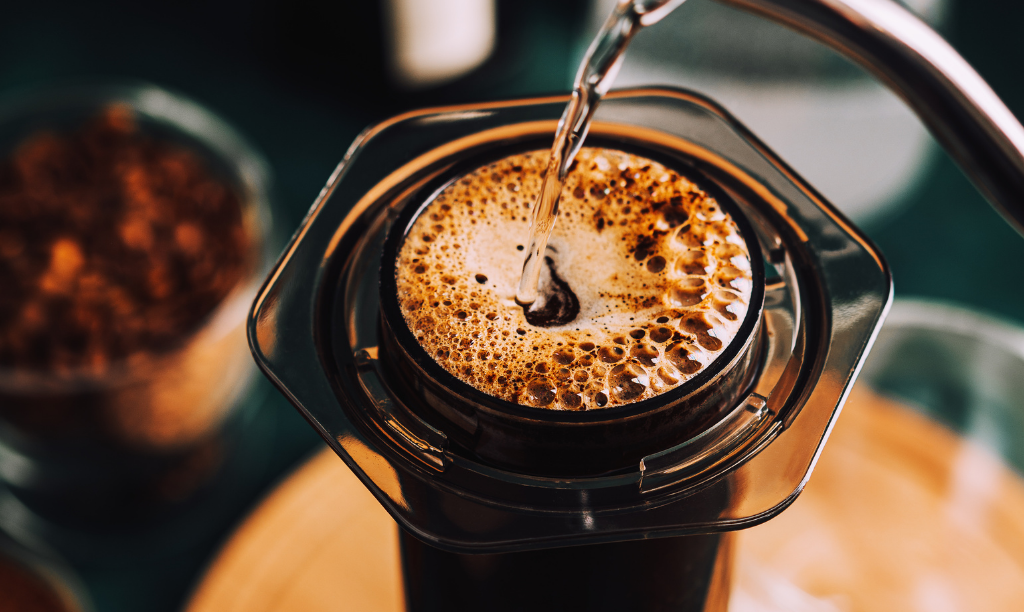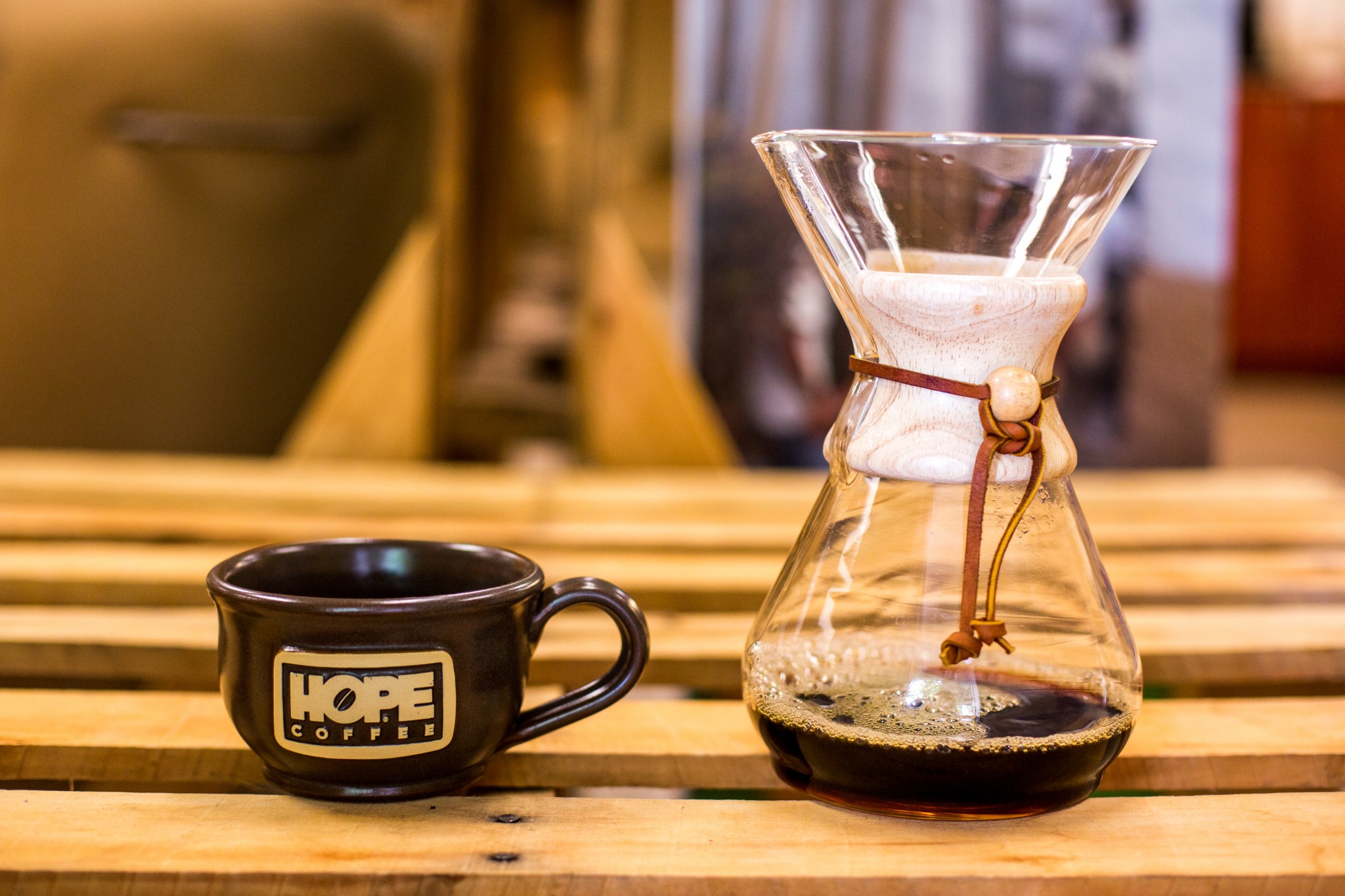Exploring the most effective Coffee Brewing Methods for Perfect Taste Every Time
Exploring the most effective Coffee Brewing Methods for Perfect Taste Every Time
Blog Article
The Science Behind Coffee Brewing: Just How Temperature and Time Affect Your Drink
Recognizing the science behind coffee developing discloses that temperature and time are not mere variables but essential aspects that determine the beverage's flavor profile and general quality. The optimal brewing temperature level commonly drops between 195 ° F and 205 ° F, while the duration of extraction differs dramatically throughout various methods. This interaction of aspects can result in a mug that is either fascinating or unsatisfactory. As we explore the nuances of these elements, the inquiry emerges: exactly how can one efficiently equilibrium temperature level and time to accomplish that perfect mixture?
The Chemistry of Coffee Extraction
The chemistry of coffee removal delves right into the elaborate procedures that transform raw coffee beans right into the aromatic beverage appreciated worldwide. This change primarily includes the solubility of various substances existing in the beans, which are affected by variables such as work size, water high quality, and the developing method used.
Throughout the developing process, hot water functions as a solvent, extracting soluble substances, including high levels of caffeine, lipids, sugars, and acids, from the coffee grounds. Each compound adds to the flavor profile, fragrance, and body of the final beverage. For circumstances, acids are liable for intense and zesty notes, while oils add to a rich mouthfeel.
The preliminary phases of developing essence acids and sugars, leading to an enjoyable acidity, while prolonged removal can lead to bitterness due to over-extraction of undesirable compounds. Recognizing these chemical communications is critical for optimizing brewing techniques, as the balance between extraction time and water temperature level can considerably influence the overall high quality of the coffee.
Suitable Brewing Temperatures
Discovering the best brewing temperature level is necessary for unlocking the full possibility of coffee flavors and fragrances - coffee brewing methods. Study suggests that the ideal variety for developing coffee exists in between 195 ° F to 205 ° F(90 ° C to 96 ° C) Within this variety, the extraction process successfully liquifies the preferable soluble substances in coffee beans, causing a flavorful and well balanced cup
Developing at reduced temperature levels, such as listed below 195 ° F(90 ° C ), may lead to under-extraction, generating an acidic and weak brew with muted tastes. Conversely, developing at temperature levels surpassing 205 ° F(96 ° C) can bring about over-extraction, creating a extreme and bitter taste because of the too much dissolution of undesirable substances, such as tannins.
Moreover, the ideal developing temperature level can differ depending upon the coffee bean kind and roast level. Lighter roasts frequently profit from a little higher temperatures to boost their complex taste profiles, while darker roasts might be much better matched to lower temperature levels to minimize resentment.
Ultimately, keeping precision in developing temperature levels is essential for accomplishing an unified balance of flavors, guaranteeing that every cup of coffee provides a satisfying sensory experience.
Influence of Developing Time
Developing time plays a critical role in determining the taste profile and total top quality of coffee. The extraction procedure, which influences the taste, fragrance, and body of the beverage, is greatly based on just how long the coffee grounds touch with water. Shorter brewing times can result in under-extraction, resulting in a weak or sour flavor, as insufficient soluble substances are dissolved. On the other hand, long term developing can lead to over-extraction, where unfavorable substances are launched, causing a bitter or astringent taste.
Ideal developing time differs relying on the technique made use of and the grind dimension of the coffee. For circumstances, a French press typically needs regarding 4 minutes, while espresso removal is normally finished within 25 to 30 seconds. It is important to adjust developing time in combination with various other variables, such as water temperature and coffee-to-water proportion, to achieve the preferred taste account.
Understanding the effect of brewing time allows coffee lovers to fine-tune their developing methods, ultimately improving the sensory experience of their mug (coffee brewing methods). With mindful interest to this variable, one can open the complete capacity of the coffee, disclosing its distinct attributes and subtleties
Brewing Methods and Their Effects

For instance, techniques like French press and cool mixture permit a longer steeping time, leading to a fuller body and durable flavor as a result of raised removal of oils and soluble solids. Conversely, coffee developing makes use of high stress and a much shorter removal time, creating a concentrated shot that emphasizes intense tastes and a rich crema.
Pour-over methods, such as Chemex or V60, offer a more regulated extraction process, permitting the brewer to control circulation price and water distribution, which can boost brightness and clarity. Percolation approaches cycle water through the coffee grounds numerous times, leading to a more powerful, typically bitter flavor.
Last but not least, the usage of paper filters versus metal filters can additionally impact the final preference; paper filters commonly generate a cleaner mug by trapping oils and great bits, while steel filters allow more oils to travel through, adding to a fuller mouthfeel - coffee brewing methods. Recognizing these blog subtleties can boost the coffee experience dramatically
Tips for Improving Your Mixture
A well-executed brew can transform also the easiest coffee into an amazing experience. To accomplish this, attention to detail is necessary. Start with high-quality, newly baked beans, as their flavor profile reduces over time. Grind the beans simply prior to making to optimize freshness, guaranteeing the grind dimension matches your brewing approach-- coarser for French press and finer for coffee.
Water top quality plays a critical duty; usage filteringed system water cost-free from impurities. The ideal developing temperature level ranges in between 195 ° F and 205 ° F(90 ° C to 96 ° C ) As well hot can scorch the coffee, while also cool might under-extract tastes.
Timing is similarly vital. For immersion techniques, soaking for 3 why not find out more to 5 minutes is ideal, whereas drip methods commonly take around 5 minutes. Experiment with mixture times to find your favored stamina.

Verdict
In recap, the detailed relationship in between temperature and time is extremely important in the coffee developing procedure. Complying with optimal brewing temperatures between 195 ° F and 205 ° F, along with precise timing customized to every approach, you could try these out ensures the preferred taste profile is achieved. Recognizing these clinical concepts empowers individuals to fine-tune their brewing techniques, ultimately causing a more well balanced and satisfying coffee experience. Mastery of these variables is essential for any type of coffee fanatic seeking quality in their drink.
Comprehending the science behind coffee developing discloses that temperature level and time are not simple variables however crucial components that dictate the beverage's flavor account and total top quality. Comprehending these chemical interactions is essential for maximizing developing strategies, as the balance in between extraction time and water temperature can dramatically influence the total high quality of the coffee.Developing time plays a pivotal function in figuring out the flavor profile and total top quality of coffee. By focusing on these aspects-- bean high quality, grind size, water temperature, soaking time, and ratio-- you can boost your coffee developing procedure, resulting in a constantly superior mug.
In recap, the elaborate connection between temperature and time is paramount in the coffee developing procedure.
Report this page